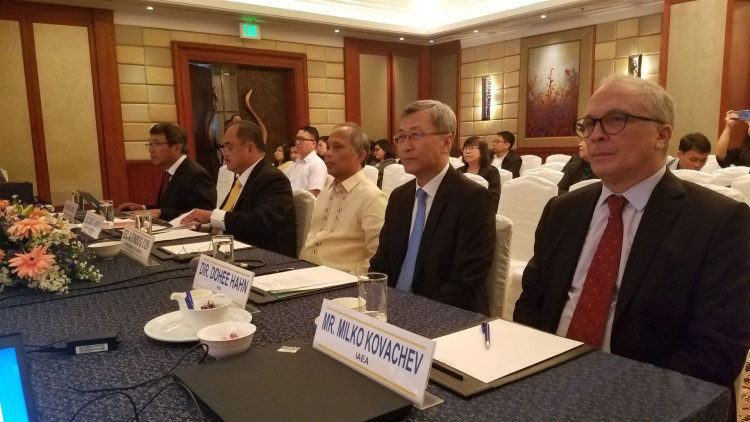An International Atomic Energy Agency (IAEA) team of experts has concluded an eight-day mission to the Republic of the Philippines to review its development of infrastructure for nuclear power. The Integrated Nuclear Infrastructure Review (INIR), which ended on 17 December, was conducted at the invitation of the Government of the Philippines.
The INIR team reviewed the status of nuclear infrastructure development using the Phase 1 criteria of the IAEA's Milestones Approach, which provides detailed guidance across three phases (consider, prepare, construct) of development. The end of Phase 1 marks the readiness of a country to make a knowledgeable commitment to a nuclear power programme. The team was hosted by the Philippines’ Nuclear Energy Programme Implementing Organization (NEPIO), which was established by the Department of Energy in 2016 at the direction of Secretary of Energy Alfonso Cusi.
“We had an excellent collaborative effort. The Philippines was eager to engage openly with our team,” said team leader Milko Kovachev, Head of the IAEA’s Nuclear Infrastructure Development Section. “It is evident that the Philippines is following a systematic approach to finalize its nuclear power strategy and complete the associated infrastructure development.”
The INIR team noted that the NEPIO has completed several studies and that draft legislation addressing nuclear safety, security, and safeguards and establishing an independent regulatory body is being considered in the Congress. The INIR team further noted that the Philippines recognizes the importance of open and transparent public communication and the need to include a broader range of stakeholders in preparations to introduce nuclear power.
The team comprised experts from Algeria, Morocco, Spain and the United Kingdom as well as IAEA staff. It reviewed the status of 19 nuclear power programme infrastructure issues using the IAEA Nuclear Energy Series Evaluation of the Status of National Infrastructure Development. Prior to the mission, the Philippines submitted a self-evaluation report covering all infrastructure issues as well as supporting documents to the IAEA.
The team made recommendations and suggestions, highlighting areas where action could assist Philippines in making further progress, including:
- Involving a broader range of stakeholders in completing the work required to enable a national commitment to introduce nuclear power.
- Developing a legal and regulatory framework that ensures and demonstrates a commitment to safety, security and non-proliferation.
- Further enhancing its approaches to human resource and leadership development, nuclear fuel cycle options and electrical grid impacts.
- Adapting the existing national frameworks for emergency preparedness and response and nuclear security in light of a future nuclear power project.
The team also identified some good practices that would benefit other countries considering the introduction of nuclear power in the areas of legal framework, stakeholder involvement and site and supporting facilities.
Welcoming the outcome of the mission, Secretary Cusi affirmed the Government’s commitment to implementing the team’s recommendations as it takes its next steps in considering the development of a nuclear power programme, in line with international legal instruments and IAEA safety standards and security guidance.
“Our technical working groups have worked hard over the last 24 months preparing the initial studies,” he said. “The results from the INIR mission will help us focus our efforts on the identified gaps, accelerate the legislative process and prepare the national decision. It is high time we put the framework in place to bring nuclear power into the energy mix. We should learn the lessons from the past and catch up with the missed opportunities.”
About INIR Missions
Integrated Nuclear Infrastructure Review (INIR) missions are based on the IAEA Milestones Approach, with its 19 Infrastructure Issues, three Phases and three Milestones. INIR missions enable IAEA Member State representatives to have in-depth discussions with international experts about experiences and best practices in different countries. In developing its recommendations, the INIR team takes into account the comments made by the relevant national organizations. Implementation of any of the team’s recommendations is at the discretion of the Member State requesting the mission. The results of the INIR mission are expected to help the Member State to develop an action plan to fill any gaps, which in turn will help the development of the national nuclear infrastructure. The IAEA publishes the INIR mission report on its website 90 days after its delivery to the Member State, unless the State requests in writing that the IAEA not do so.


